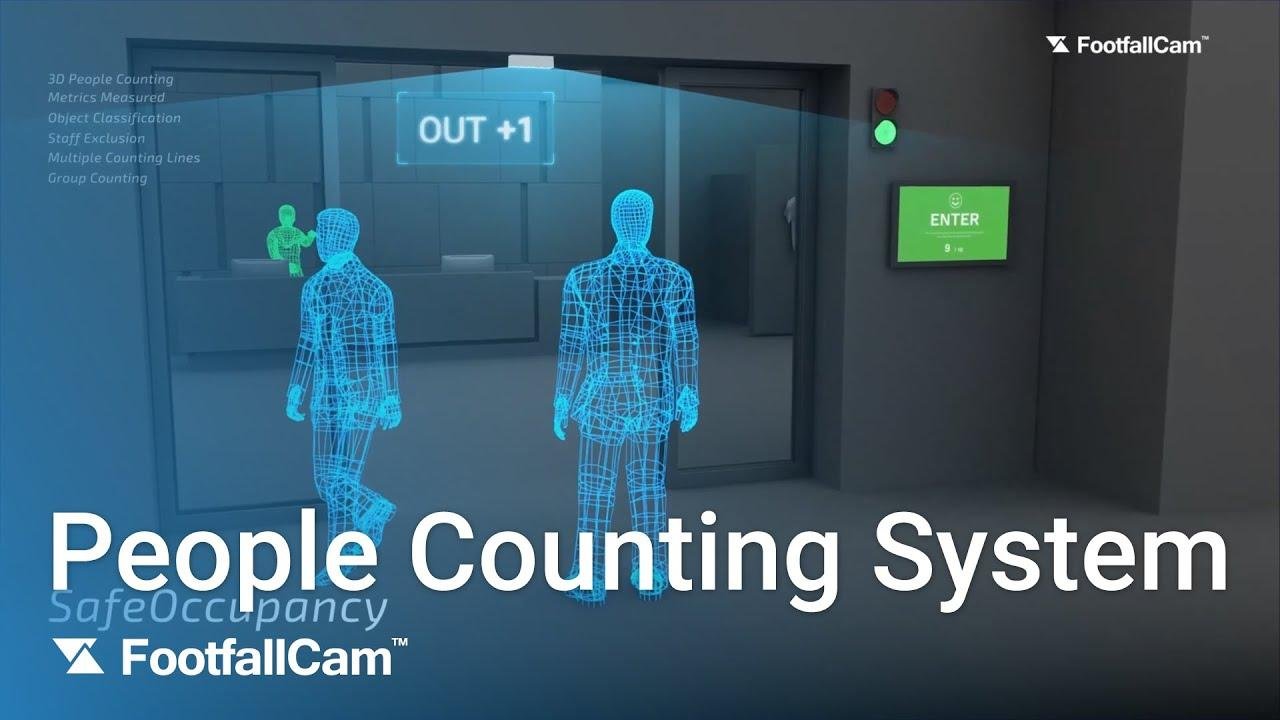People Counting System: Enhancing Business Operations and Insights

In today’s data-driven world, understanding customer behavior is pivotal for business success. One of the most effective tools for gathering valuable insights is a people counting system. This technology allows businesses to monitor foot traffic, optimize operations, and enhance customer experiences. Let's explore the various aspects of people counting systems, their applications, and their benefits.
What is a People Counting System?
A people counting system is a technology solution designed to count the number of people entering or exiting a specific people counting system area. These systems use various methods, such as infrared sensors, video analytics, Wi-Fi tracking, and thermal imaging, to accurately monitor foot traffic.
These systems are used across different sectors, including retail, transportation, healthcare, and event management, to gather data on visitor numbers and movement patterns.
Types of People Counting Systems
Infrared Sensors:
Infrared people counters use sensors placed at doorways or entrances. They detect when a person passes through by breaking the infrared beam. This technology is cost-effective and simple to install but may have limitations in differentiating between closely moving individuals.
Video Analytics:
Video-based counting systems use cameras and advanced software algorithms to analyze footage and count individuals. This method provides high accuracy and can differentiate between people, objects, and even determine the direction of movement.
Thermal Imaging:
Thermal people counters detect body heat, allowing them to work effectively even in low-light conditions. They are particularly useful in environments where privacy concerns are critical, as they do not capture detailed visual images.
Wi-Fi and Bluetooth Tracking:
These systems track signals from mobile devices as people move through a space. While not as precise in counting individual people, this method provides insights into visitor duration and movement patterns within larger areas.
Applications of People Counting Systems
Retail Industry:
Retailers use people counting systems to measure store traffic, analyze peak shopping times, and optimize staff allocation. By understanding customer flow, they can improve store layout, marketing strategies, and overall customer experience.
Public Transportation:
Transportation authorities deploy these systems to monitor passenger numbers, manage crowd control, and improve scheduling. Accurate data helps in resource allocation and enhances safety and efficiency in stations and vehicles.
Event Management:
Event organizers utilize people counting technology to manage crowd density, ensure compliance with capacity regulations, and enhance visitor experience by avoiding overcrowding.
Healthcare Facilities:
Hospitals and clinics use people counting systems to monitor patient flow, manage waiting areas, and optimize resource allocation to improve patient care and operational efficiency.
Smart Buildings:
In the context of smart buildings, these systems contribute to energy efficiency by adjusting heating, ventilation, and lighting based on occupancy levels. This not only reduces operational costs but also enhances occupant comfort.
Benefits of People Counting Systems
Data-Driven Decision Making:
By providing precise data on visitor numbers and behavior patterns, people counting systems empower businesses to make informed decisions about staffing, marketing, and operational adjustments.
Enhanced Customer Experience:
Understanding peak times and visitor flow allows businesses to improve customer experience by reducing wait times, optimizing service delivery, and tailoring marketing efforts to meet customer needs.
Operational Efficiency:
These systems help in resource planning and allocation. For instance, retail stores can adjust staffing levels during peak times, while public transport can optimize schedules and routes based on passenger data.
Compliance and Safety:
In environments where occupancy limits are critical, such as during a pandemic, people counting systems ensure compliance with safety regulations by providing real-time data on the number of people in a space.
Cost Savings:
By optimizing operations, reducing energy consumption in smart buildings, and enhancing staff allocation, businesses can achieve significant cost savings.
Challenges and Considerations
Privacy Concerns:
With the increasing use of video and Wi-Fi-based systems, privacy concerns are a significant issue. Businesses must ensure compliance with data protection regulations and implement measures to anonymize data where necessary.
Accuracy and Maintenance:
The accuracy of people counting systems can be affected by factors such as lighting conditions, installation quality, and software calibration. Regular maintenance and updates are essential to ensure reliable performance.
- Art
- Causes
- Crafts
- Dance
- Drinks
- Film
- Fitness
- Food
- Juegos
- Gardening
- Health
- Home
- Literature
- Music
- Networking
- Other
- Party
- Religion
- Shopping
- Sports
- Theater
- Wellness
- Politics
- IT
- Relationship
- Blockchain
- NFT
- Crypto
- Fintech
- Automobile
- Faith
- Family
- Animals
- Travel
- Pets
- Coding
- Comedy
- Movie
- Game
- Computer


